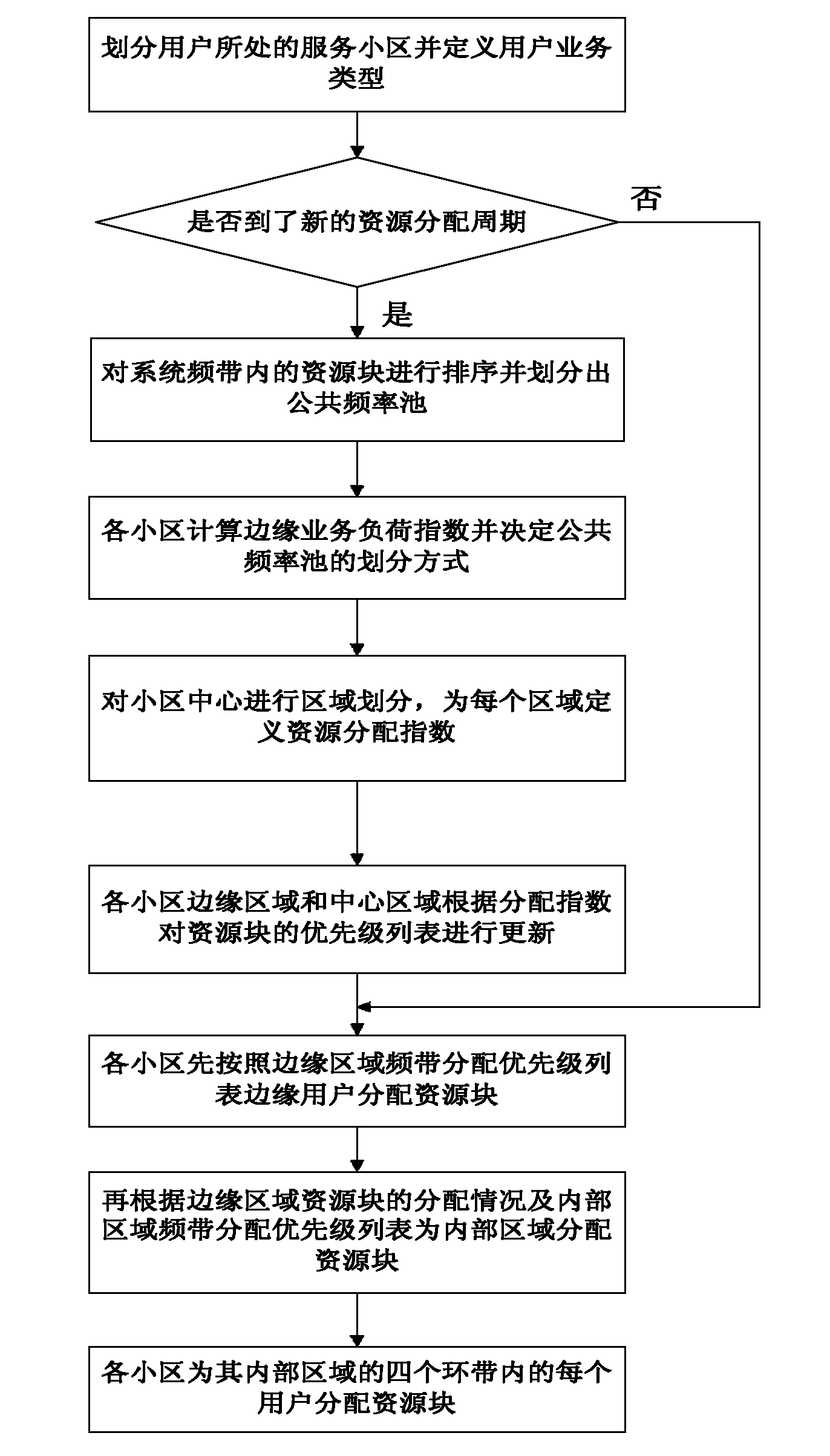Heterogeneous service QoS based LTE network inter-cell interference ordination method
A technology of inter-cell interference and coordination methods, applied in network planning, electrical components, wireless communication, etc., can solve the problem that the central area of the cell is not finely divided, so as to improve the throughput of the cell edge and reduce the signaling interaction overhead. Effect
- Summary
- Abstract
- Description
- Claims
- Application Information
AI Technical Summary
Problems solved by technology
Method used
Image
Examples
Embodiment Construction
[0038] see figure 2 , the concrete steps of the present invention are as follows:
[0039] Step 1: Divide the serving cell where the user resides and define four service types.
[0040] 1a) Divide the central area and the edge area. In this example, the service area is divided according to the radius of the service area. The radius of the service area is set to be R meters, the range of the central area is 0-r meters, and the range of the edge area is r-R meters;
[0041] 1b) According to the real-time service and minimum rate requirements, define four service types for all users in the cell: real-time-low rate service, real-time-high rate service, non-real-time-low rate service and non-real-time-high rate service.
[0042] Step 2, the number of resource blocks, service priority and maximum delay required by each service are shown in Table 1:
[0043] Table 1
[0044] business type
number of resource blocks required
service priority
Maximum delay(ms) ...
PUM
 Login to View More
Login to View More Abstract
Description
Claims
Application Information
 Login to View More
Login to View More - R&D Engineer
- R&D Manager
- IP Professional
- Industry Leading Data Capabilities
- Powerful AI technology
- Patent DNA Extraction
Browse by: Latest US Patents, China's latest patents, Technical Efficacy Thesaurus, Application Domain, Technology Topic, Popular Technical Reports.
© 2024 PatSnap. All rights reserved.Legal|Privacy policy|Modern Slavery Act Transparency Statement|Sitemap|About US| Contact US: help@patsnap.com










